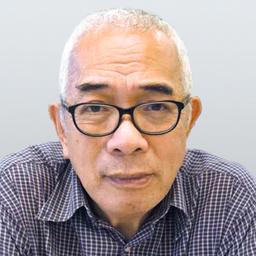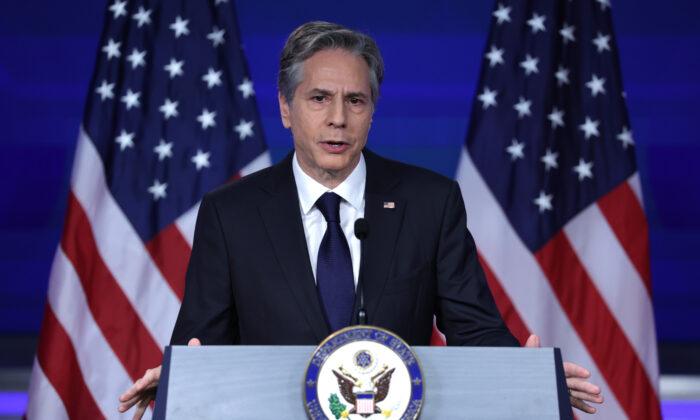Sing Tao, the Beijing regime’s most influential propaganda outlet in overseas Chinese communities, has been required by the U.S. Department of Justice to register its U.S. subsidiary as a “foreign agent.” This is the first Hong Kong-based news outlet to be thus labeled.
STNC, listed on the Hong Kong Exchange, is the oldest and second-largest newspaper in the city, and has branches and operations all over the Western world. Apart from the flagship Sing Tao Daily, it also publishes several tabloids and an English language newspaper. In the United States alone, there are local versions of Sing Tao Daily in New York, Los Angeles, and San Francisco. It also runs a radio station based in Burlingame, California.
According to the company’s FARA filings, more than half of its U.S. content is purchased from a Chinese company, Star Production Ltd., based in China’s Shenzhen special economic zone.
The U.S. versions of Sing Tao Daily claim to have the largest readership of all Chinese language newspapers. Thus, Sing Tao has considerable influence in the Chinese diaspora. This made it the obvious target of the Chinese Communist Party’s (CCP) plan to bring foreign media under its control.
The transformation of STNC’s stance from anti- to pro-CCP is considered a “success” story of the Chinese regime’s “united front” strategy. The process involved three stages.
First, the CCP softened Sing Tao’s anti-CCP stance by lavishing hospitality on STNC’s majority shareholder, Sally Aw Sian, who was also the daughter of the company’s founder. In the mid-1980s, Aw was given a high-level reception when she visited her ancestral home in Fujian for the first time. The CCP then appointed Aw as a member of China’s top advisory organ, the Chinese People’s Political Consultative Conference (CPPCC).
Consequently, Sing Tao Daily dropped the ROC calendar and replaced it with the Gregorian calendar (when denoting the dates of the newspaper), and stopped using the derogative term “Communist China” when referring to Beijing.
In her memoir, Aw recalled how Xu Jiatun, then-director of New China News Agency (commonly known as Xinhua News Agency) in Hong Kong spent a lot of time befriending her.

Second, the CCP seized every opportunity to exercise indirect control. Aw was implicated in a bribery case in 1998. But then, the first post-1997 secretary for justice of Hong Kong, Elsie Leung Oi-sie, acquitted Aw on the grounds of public interest because her company employed thousands of people. However, Aw couldn’t remain in her post as chairman.
Chinese media believed that the CCP managed to have billionaire Charles Ho Tsu-kwok, owner of the lucrative Hong Kong Tobacco Corp. Ltd., buy up Aw’s shares and take control of the newspaper conglomerate. Thus, the CCP succeeded in gaining indirect control of the newspaper. Ho has ties to the CCP, as he became a member of the CPPCC in 1998.
Since the takeover, STNC became fervently pro-Beijing. Ho named Larry Li, former deputy editor of the People’s Daily, to be the managerial editor of all the overseas versions of Sing Tao Daily. It’s no wonder why Hongkongers ranked Sing Tao as the third Beijing newspaper in the city after Wen Wei Po and Ta Kung Pao, the CCP’s official mouthpiece in Hong Kong.
Third, the CCP took direct control. In June, Kaisa Group, a property company based in mainland China, bought shares from Charles Ho and became the single largest shareholder of STNC. Kaisa Chairman Kwok Ying-shing said that it was time for him to repay society by acquiring STNC, while profitability wasn’t his main concern. Kwok’s remark suggests that he was echoing Chinese leader Xi Jinping’s call for private entrepreneurs to take up more philanthropic activities.
Some of the directors of Kaisa have previously held CCP government posts and trained at various Party schools. For example, Kaisa’s website revealed that Executive Director Sun Yuenan, a graduate of the Central Party School, was previously an official in the Land Resources Bureau of Hunan Province, while co-President Li Haiming graduated from the Guangdong Provincial Party School.
Kwok is also the vice president of the Harmony Club, which is based in Shenzhen. The club was set up by the CCP as one of its united front outlets to garner support from private entrepreneurs. The majority of its 28 founders, including Kwok, were members of the CPPCC, the operating arm of the CCP’s United Front Department.
The takeover also provided the DOJ with strong evidence to brand STNC as a “foreign agent.” Sing Tao U.S. stated in the filing, “The owners of Sing Tao News Corporation Ltd. stock include individuals and entities, some of whom may be ‘foreign principals.’”
After the takeover by Kaisa, STNC became the third-most influential media outlet in Hong Kong under the control of the CCP, following the South China Morning Post (SCMP) and the TVB.
This three-stage approach in subjugating an anti-CCP media outlet has happened before and one such example is China Times in Taiwan. He Qinglian, senior research fellow at the Human Rights in China, wrote a book titled “China’s Grand External Propaganda Campaign,” which goes into detail about this process.
While in actual practice, the FARA stipulation might not adversely affect STNC’s U.S. operation, it serves as a wake-up call in alerting people about the threat of the CCP’s ideological infiltration in the United States.
In October 2019, China held its 10th World Forum of Chinese Language Media and a total of 427 delegates from Chinese media outlets worldwide attended the event. The main topic was about telling the China story better in the international community. This was dubbed as a “Grand Parade of Chinese Media Abroad.” Among the attendees, 62 were from the United States, 54 from Canada, and 44 from Australia and New Zealand. This so-called Grand Parade provided a glimpse of the extent of Beijing’s propaganda inroads into Chinese communities in the West.
In view of this, the FARA designation of STNC was timely.





